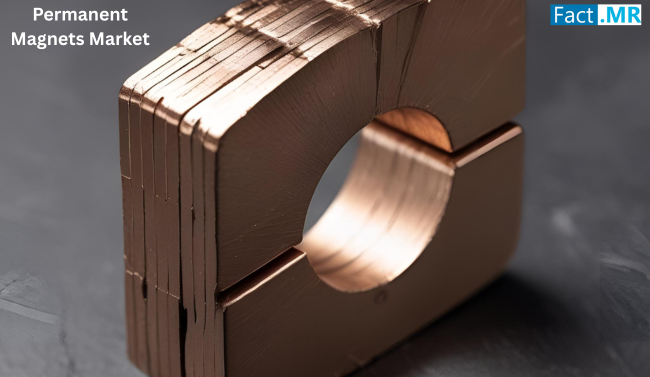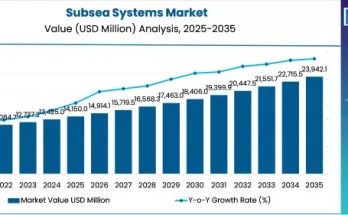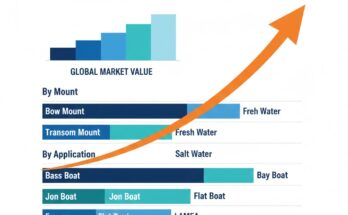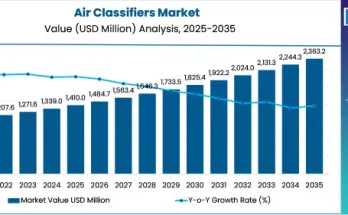The Permanent Magnets Market is on a notably upward trajectory, with its value estimated at US $40.56 billion in 2023, poised to nearly double to US $91.71 billion by 2033, reflecting a robust CAGR of 8.5% over the decade.
Key Segments & Regional Dynamics
The market is structured by magnet material types—including Ferrite-based, Neodymium Iron Boron (NdFeB), Alnico, and Samarium Cobalt (SmCo)—and spans multiple regions including North America, Europe, Asia-Pacific, and the Middle East.
Material Type Insights
- NdFeB magnets are forecasted to see the strongest push, with demand expected to grow at CAGR 9%, reaching US $27.42 billion by 2033.
Regional Highlights
- Germany: Expected to post a CAGR of 9.5%, reaching US $5.4 billion by 2033.
- United States: Projected market value of US $25.95 billion by 2033, supported by increased applications in high-end tech, medical, EVs, and consumer electronics.
- India: Poised for robust growth, with projections to reach US $7.52 billion by 2033, fueled by electronics manufacturing and renewable energy initiatives.
- Japan: Estimated to grow at 7.2% CAGR, approaching US $5.59 billion by 2033, driven by hardware and electronics demand.
Automotive Sector as a Key Catalyst
The automotive segment is expected to account for a substantial share, expanding to nearly US $29.9 billion by 2033, powered by the surge in electric vehicle adoption. Across industries—consumer electronics, energy (notably wind turbines), medical, industrial, aerospace and defense—permanent magnets are increasingly integral.
Market Forces & Strategic Drivers
Renewable Energy & Electrification
The green transition is a powerful driver: renewable energy systems, particularly wind turbine generators, rely heavily on NdFeB magnets for enhanced efficiency and reduced maintenance. Meanwhile, the boom in electric vehicles (EVs) is fueling magnet demand across the automotive sector.
Consumer Electronics & Smart Homes
The electronics sector continues to drive demand—from smartphones and speakers to smart home systems—propelling magnet usage in high-performance, compact devices.
Industrial, Aerospace & Medical Applications
Magnets are central to industrial automation, medical imaging (e.g., MRIs), aerospace systems, and separation and sorting applications across manufacturing.
Raw Material Fluctuations & Supply Risks
Market growth is tempered by volatility in rare-earth material prices, which directly impacts production costs and supply chain stability.
R&D, Sustainability & Emerging Opportunities
Innovation & Startups
There’s growing momentum from startups focusing on higher-efficiency magnet technologies. Target areas include automation, defense, and aerospace—where stringent performance demands and sustainability considerations are critical.
Alternative Materials & Greener Production
Research is underway to reduce reliance on rare-earth elements. For example, REE-free hexaferrite magnets dominate a large portion of the market and are being optimized for better performance through advanced sintering innovations. Techniques like two-step sintering and cold sintering are reducing energy consumption while enhancing magnet density and properties.
Regional Strategies: Europe’s Supply Chain Push
Europe is increasingly investing in rare-earth processing facilities to reduce dependence on imports. Efforts to develop a resilient supply chain are aimed at meeting the region’s growing demand for magnets in automotive, energy, and electronics applications.
Key Players & Competitive Landscape
Major industry players include:
- Adams Magnetic Products Co.
- Arnold Magnetic Technologies
- Eclipse Magnetics Ltd.
- Hitachi Metals Ltd.
- Hangzhou Permanent Magnet Group
- Magnequench International LLC
- Shin-Etsu Chemical Co. Ltd.
- TDK Corporation
- Daido Steel, Electron Energy, Goudsmit, Thomas & Skinner, and others.
These firms are enhancing supply chains and investing heavily in technological innovation, mergers, and strategic expansion to strengthen their market presence.
Summary & Future Forecast
The Permanent Magnets Market is on a strong growth path, underpinned by:
- Increasing demand from automotive (EVs), renewable energy, electronics, and industrial sectors.
- Strong regional growth expected in the US, Europe, India, and Japan.
- Robust R&D into alternative materials and energy-efficient processes.
- Evolving supply chain dynamics, especially in rare-earth sourcing and regional production policies.
If the US$91.71 billion valuation by 2033 holds, the magnet market will nearly double in the coming decade. Forecasts from other industry analysts also align on strong growth, with global demand expected to expand at a mid-to-high single-digit CAGR.
Final Thoughts:
The Permanent Magnets Market is entering a dynamic era—driven by the green energy transition, electrified vehicles, and continued digitalization. Sustainability, supply resilience, and advanced materials technology will define the next wave of growth. It’s a space where strategic players, agile innovators, and resource-savvy regions can all find opportunities to thrive.



